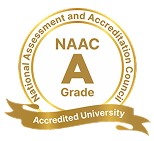OPEN HOUSE 2026 Click here to know more

OPEN HOUSE 2026 Click here to know more

FLUID MECHANICS
The Fluid Mechanics Laboratory is an integral part of the U V Patel College of Engineering; the facilities are used to offer Fluid Mechanics Laboratory and Fluid Mechanics Theory as well as, to run demonstrative experiments for Civil, Mechanical engineering students. It covers measuring devices and techniques, error analysis in experimental works and analysis of assumptions in the theory of fluid mechanics. The fluid mechanics laboratory is actively engaged in research on a wide range of topics. The research areas are inspired by practical applications that already exist in a few cases, but also those that are yet to be realized. This lab would provide a framework for conceiving real-life systems of remarkable complexity.
- The Fluid Mechanics Laboratory consisof in four parts:
- Hydrodynamics section: includes equipment for closed conduit flow, a small open channel flume, and turbo machinery moAirflow
- Air flow room: includes apparatus to study flow through nozzles, airflow in bends, drag force and boundary layer.
- Hydraulics section: Venturiflume, orifice meter and Notches are provided here.
Workshop room: contains the equipment and machinery used for maintenance and repair of the laboratory installations. The Fluids Mechanics Lab has access to experienced researchers and technicians that offer consulting services to the industry, government and other universities. The lab is increasingly obtaining field measurement equipment for fluid flow variables such as pressure and discharge. It also has the capability for calibration of several flow meters and conventional methods for comparisons.
|
SR NO |
PRACTICAL NAME |
APPLICATION |
| 1 | Introduction to the fluid mechanics and to study of different fluid properties | To study fluid mechanics and different properties of fluid |
| 2 | To study methods for finding out the viscosity of a fluid. | Studying different methods to find the viscosity of a fluid. |
| 3 | To determine the viscosity of the given oil at different temperatures using a saybolt viscometer | Determination of viscosity of any fluid at different temperatures using saybolt viscometer |
| 4 | To determine the fluid viscosity by redwood viscometer | Determination of the fluid viscosity by redwood viscometer |
| 5 | To verify the Reynolds number for laminar and turbulent flow | Verifying Reynolds number for different flows |
| 6 | To study losses due to friction in pipe | Studing different types of losses due to friction in pipe |
| 7 | Study of different types of manometers. | To Study the different types of manometers. |
| 8 | Study of different types of flow. | To study the different types of flows |
| 9 | To determine the coefficient of discharge of notches. | Determination of the coefficient of discharge of different types of notches. |
| 10 | To verify Bernoulli's theorem for the given flow apparatus. | Verifying Bernoulli's theorem for any flow apparatus. |
| 11 | To determines the Coefficient of discharge of the Venturimeter. | Determination of Co-efficient of discharge of Venturimeter. |
| 12 | To determines Co-efficient of discharge for Orifice meter. | Determination of Co-efficient of discharge for Orifice meter. |
| 13 | To determine metacentric height of a Ship Model. | Determination of metacentric height of a Ship Model. |







